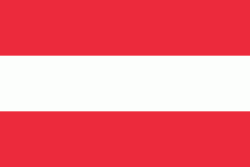Rolls-Royce Museum (Rolls-Royce Museum)
The Rolls-Royce Museum is a privately owned automobile museum in Dornbirn, Vorarlberg, Austria. Established in 1982, and officially opened to the public in 1999, it has been said to have the world's largest collection of Rolls-Royce cars.
The museum was originally housed in a former textile factory owned by. In 2017, the museum's founder, Franz Vonier, died, and the local city and state decided to cease subsidising the museum's rent payments. The founder's successors, Bernhard and Johannes Vonier, therefore moved the museum to a smaller building nearby that they owned themselves.
With less space available in the smaller building, the museum now focuses on its more special exhibits, and plans to present a new theme each year. The museum's permanent collection is made up of over 1,000 objects, including around 70 cars.
Highlights from the permanent exhibition include:
* 1927 Phantom I, driven by Peter O’Toole in Lawrence of Arabia
* 1927 Phantom I, owned by General Franco
* 1932 Phantom II, driven by Rita Hayworth
* 1936 Phantom III, owned by Queen Elizabeth
* List of automobile museums
The museum was originally housed in a former textile factory owned by. In 2017, the museum's founder, Franz Vonier, died, and the local city and state decided to cease subsidising the museum's rent payments. The founder's successors, Bernhard and Johannes Vonier, therefore moved the museum to a smaller building nearby that they owned themselves.
With less space available in the smaller building, the museum now focuses on its more special exhibits, and plans to present a new theme each year. The museum's permanent collection is made up of over 1,000 objects, including around 70 cars.
Highlights from the permanent exhibition include:
* 1927 Phantom I, driven by Peter O’Toole in Lawrence of Arabia
* 1927 Phantom I, owned by General Franco
* 1932 Phantom II, driven by Rita Hayworth
* 1936 Phantom III, owned by Queen Elizabeth
* List of automobile museums
Map - Rolls-Royce Museum (Rolls-Royce Museum)
Map
Country - Austria
 |
 |
| Flag of Austria | |
Austria emerged from the remnants of the Eastern and Hungarian March at the end of the first millennium. Originally a margraviate of Bavaria, it developed into a duchy of the Holy Roman Empire in 1156 and was later made an archduchy in 1453. In the 16th century, Vienna began serving as the empire's administrative capital and Austria thus became the heartland of the Habsburg monarchy. After the dissolution of the Holy Roman Empire in 1806, Austria established its own empire, which became a great power and the dominant member of the German Confederation. The empire's defeat in the Austro-Prussian War of 1866 led to the end of the Confederation and paved the way for the establishment of Austria-Hungary a year later.
Currency / Language
| ISO | Currency | Symbol | Significant figures |
|---|---|---|---|
| EUR | Euro | € | 2 |
| ISO | Language |
|---|---|
| HR | Croatian language |
| DE | German language |
| HU | Hungarian language |
| SL | Slovene language |















